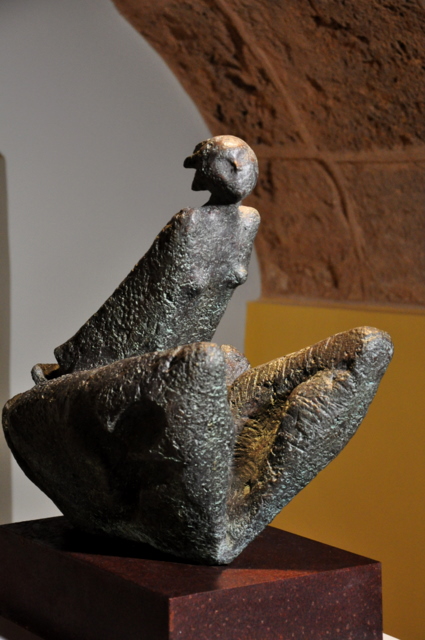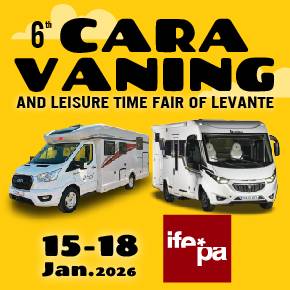

Guidelines for submitting articles to Roda Golf Resort Today
Hello, and thank you for choosing La Torre Today.com to publicise your organisation’s info or event.
Roda Golf Resort Today is a website set up by Murcia Today specifically for residents of the urbanisation in Southwest Murcia, providing news and information on what’s happening in the local area, which is the largest English-speaking expat area in the Region of Murcia.
When submitting text to be included on Roda Golf Resort Today, please abide by the following guidelines so we can upload your article as swiftly as possible:
Send an email to editor@spaintodayonline.com or contact@murciatoday.com
Attach the information in a Word Document or Google Doc
Include all relevant points, including:
Who is the organisation running the event?
Where is it happening?
When?
How much does it cost?
Is it necessary to book beforehand, or can people just show up on the day?
…but try not to exceed 300 words
Also attach a photo to illustrate your article, no more than 100kb

Museo Carrilero sculpture museum in Caravaca de la Cruz
The art and sculptures of Jose Carrilero in Caravaca de la Cruz
 Sculptor José Carrilero Gil was born in 1928 in Caravaca de la Cruz, in the building which now houses a museum dedicated to his works, the Museo Carrilero. His father was head of the Guardia Civil in Caravaca and at this point the former Palacio Muñoz Otarola was the headquarters of the organization.
Sculptor José Carrilero Gil was born in 1928 in Caravaca de la Cruz, in the building which now houses a museum dedicated to his works, the Museo Carrilero. His father was head of the Guardia Civil in Caravaca and at this point the former Palacio Muñoz Otarola was the headquarters of the organization.
When he was three, Carrilero's father was transferred to Murcia, and the family moved to a house opposite the Cuartel de Artilleria in the south of the regional capital. His studies in art began with a drawing course in La Sociedad Económica de Amigos del País, and from there he attended the Escuela de Artes y Oficios de Murcia from the age of 13, with Luis Garay and Clemente Cantos amongst his professors.

Returning to Rome, he worked for the national mint, producing several series of bronze medallions.
In 1964 he was appointed as professor of drawing in the Escuela de Artes Aplicadas y Oficios Artísticos in Madrid, a post which he held for 14 years. He also taught sculpture for two courses at the Universidad Autónoma in Madrid
During this time he became part of a group of six sculptors, mainly ex-students from the Academia in Rome, namely Venancio Blanco, Carrilero, Donaire, Montaña, Mustieles and Valverde, all of whom were teachers at Artes y Oficios, sharing a common vision for sculptural art.
Together they celebrated their first exhibition in the Dirección General de Bellas Artes de Madrid, in 1964. under the banner of Nueva Figuración. This was a prolific period both as an individual and as part of the group, and several important projects and exhibitions were the fruit.
He finally returned to Murcia with an exhibition in the Palacio Almudí in 2002.
His works in the museum
The museum houses a broad collection of Carrilero's works, ranging from commemorative bronze medallions through the naturalistic representations of trees and nature to his later works concerned with the female form.

Different techniques and influences can clearly be seen: in some pieces the indentation of an emphatic thumbprint created in the energetic and definitive manipulation of the original piece, others are ragged, jagged, brutally naïve and potently earthy in their overtones, whilst one or two are sensually curved, with an air of sophistication and bygone glamour.
Some have a rough, scratched texture, others are finely polished to smooth perfection, each making a strong statement of intent.
There are minotaurs in this room, Etruscans torn from the earth, Art Nouveau, modernism, avant-garde, Moore, Maillol, and of course the unique José Carrilero.
Location of the museum
Location of other sculptural works by José Carrilero:
Many substantial pieces are to be found in Santander, and his works are scattered throughout the world in private collections, galleries and municipal collections.
- Bronze sculpture in the Iglesia de Cerro Prieto, Móstoles.
- Relief in the Residencia de Ancianos de Cazoña, Santander.
- Large relief in el Banco Herrero, Santander.
- Reliefs in the Residencia de Niños de Polientes, Santander.
- Large relief in the Paseo de María Cristina, Santander.
- Monumento a los Hombres del Mar, Santander.
- Doors and reliefs in the Astilleros Españoles, Santander.
- Monumento al Agricultor, Madrid.
Further information about Caravaca is available from the tourist office (Plaza de España, 7, telephone 968 702424, email turismo@caravacadelacruz.es).
Or for more local information, including the Holy Jubilee Year as well as local news and what’s on, go to the home page of Caravaca Today.





































